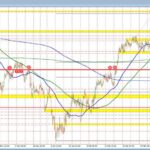
Navigating the GBP/USD Currency Swing: Key Insights for Traders
Tháng 4 7, 2025
Larry Fink’s Warning: Is a U.S. Recession Imminent? Insights on the Economy and Markets
Tháng 4 7, 2025Trade Tensions Between the U.S. and Vietnam: Navigating Tariffs and Non-Tariff Barriers
In recent months, the trade relationship between the United States and Vietnam has been marked by heightened tensions, particularly in the realm of tariffs and non-tariff barriers. Both nations are currently engaged in discussions aimed at addressing these critical issues, which have significant implications for their economic partnership.
U.S. Tariffs on Vietnamese Imports
At the forefront of these developments is the U.S. government’s proposal to impose drastic tariffs on imports from Vietnam. Specifically, a potential duty of up to 46% has been discussed. This move aligns with the broader strategy of the Trump administration to counteract what it determines to be trade imbalances and unfair trading practices. The proposed tariffs signal a strong intention by U.S. policymakers to protect American industries and address concerns over a perceived influx of competitively priced goods from Vietnam, which may disadvantage local manufacturers.
From the U.S. perspective, this tariff increase reflects ongoing efforts to reassess trade agreements and enforce regulations that promote fairness in international commerce. It raises questions about the sustainability of the trade dynamics, especially as both countries navigate an increasingly complex global economic landscape. Amidst these changes, understanding China’s position is crucial, as highlighted in the recent discussions by China’s President Xi Jinping with over 40 top global CEOs in Beijing, where he emphasized the need for international stability and collaboration. For more insights on this, you can read about it here.
Vietnam’s Diplomatic Engagement
In response to the proposed tariffs, Vietnam’s Ministry of Industry and Trade is taking proactive steps to engage with U.S. authorities. The government has emphasized its willingness to enter negotiations, seeking to foster bilateral cooperation while addressing U.S. concerns about trade imbalances. Vietnam is leveraging its existing free trade agreements with other nations to diversify its export markets, which may provide a buffer against the adverse effects of U.S. tariffs.
Vietnam’s strategic approach reflects its awareness of the critical need to balance the relationship with the U.S., a key market for its exports. The nation’s leadership recognizes that maintaining a positive trade environment is crucial not only for economic growth but also for the stability of the region.
Addressing Non-Tariff Barriers
Another significant aspect of the ongoing discussions between the U.S. and Vietnam centers around non-tariff barriers. These include challenges related to regulatory transparency, market access, and the ongoing debate surrounding Vietnam’s Value-Added Tax (VAT), which some U.S. businesses have characterized as discriminatory.
Vietnam’s Prime Minister has publicly committed to addressing these concerns in a transparent manner, indicating a willingness to reform policies that may hinder American businesses. However, the path forward is fraught with challenges, particularly as U.S. authorities remain vigilant about the implications of Vietnam’s tax policies on international trade equality.
Conclusion
The evolving trade relationship between the U.S. and Vietnam underscores the complexities of global commerce, particularly in light of recent tariff discussions and non-tariff barriers. As both countries seek to stabilize their trade ties and promote mutual economic benefits, it is clear that negotiations will play a pivotal role in determining the future of their interactions. The ongoing dialogue reflects a commitment from both sides to foster a more balanced and equitable trade environment, amidst external pressures and changing economic realities.

